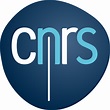Wreck One June/July 2016 Project.
Page 1
ADMAT’s maritime archaeological work in March 2016 in surveying a section of Monte Cristi Bay was partially successful, in that whilst we did not locate the wreck we were searching for, we did locate a new wreck site; despite a number of setbacks. The survey was run with the permission of Ministerio de Cultura Oficina Nacional de Patrimonio Cultural Subacuático (ONPCS) with the kind assistance of the Director General Juan Lopez and Director Francis Soto; and permission of Ministry of Medio Ambiente y Recursos Naturales authorised with the kind support of Dr. Bauista Rojas Gómez, Minister de Medio Ambiente y Recursos Naturales.
We had an excellent Team for the project. Without the hard work and time from the following, nothing would have been accomplished: Project Leader Raimund Krob from Canada; Laura Whitehead from Australia; Wesley Korpela from USA; Jeremy Schomberg and Dr. Simon Spooner from England; Ruth Pion, Rami Rodrigues, Sandy Pena (ONPCS staff), and Captain Antonio Rafael Castellano Morales (Tony) (Medio Ambiente) and Diana Peña Bastalla (Medio Ambiente) from The Dominican Republic; and François Gendron and Florence Prudhomme from France. These people made the difference and helped ONPCS protect the great underwater cultural heritage of the Dominican Republic.
Some of the small survey team for Wreck One, Raimund Krob (Team Leader), Blianka, Wesley Korpela, Laura Whitehead and Rami
The original plan was to use a large boat with a cabin which would house all the electronics required for the geophysical survey. However this boat was not available so a local yola was used. This caused challenges in that the computers did not have shade from the sun and, whilst the Panasonic Toughbook CF18 was water resistant, other laptops were not.
For the survey the Team were using ADMAT’s Sportscan Side Scan Sonar made by industry leader Imagenex. The advantage of this type of geophysical equipment was that it could operate from small boats using 12 volt car battery as oppose to other units which required mains power and therefore a heavy and bulky generator. The Sportscan also had dual frequencies which enabled us to have detailed picture of the seabed. This when connected to the Panasonic Toughbook CF18 worked extremely well. The Toughbook had Windows XP software and a built in GPS which enabled each sounding to have a position fixed. It was also connected to two flexible 25W solar panels which kept the laptops batteries charged. Unfortunately there was a port conflict with the Imagenex and the built-in GPS on the Toughbook that we could not resolve at the time, that was resolved after the project. This meant that the computer could only capture and view the side-scan data, not the side-scan data and GPS data, which added to the challenges.
Raimund Krob leading the survey with Captain Tony Castillano from the Ministry of Medio Ambiente y Recursos Naturales
The external GPS was used to log items of interest. Looking at a computer screen in an open boat, in brilliant sunshine, and tossing waves proved to be challenging, so to make this possible, the Team built a desk structure between the seats and used a rain-coat to create a shaded viewing environment. To mitigate this risk for future projects, ADMAT has procured a second Toughbook with pre-assigned ports for the Imagenex and the integrated GPS.
Please go to page 2 to continue.
ADMAT's maritime archaeological work on this wreck site was assisted by ADMAT-FRANCE a non profit organisation based in the Institut de Paléontologie Humaine, Muséum National d’Histoire Naturelle, Paris.
ADMAT-FRANCE is a sub division of the Anglo ~ Danish Maritime Archaeological Team
ADMAT is delighted to have an association with Muséum Nationald’Histoire Naturelle at Paris, départememt Préhistoire, UMR-CNRS 7194.






